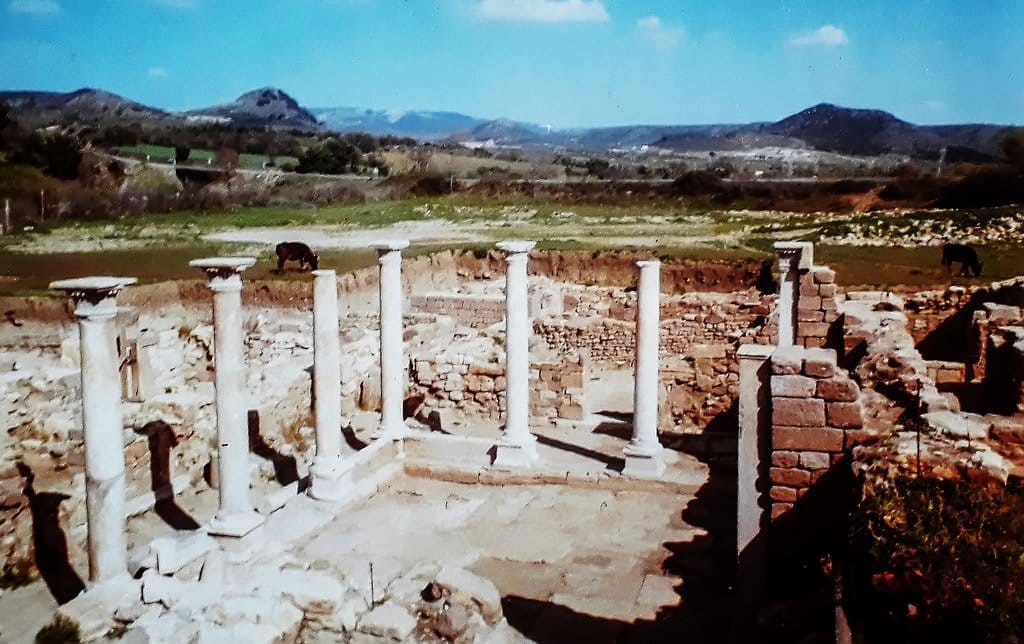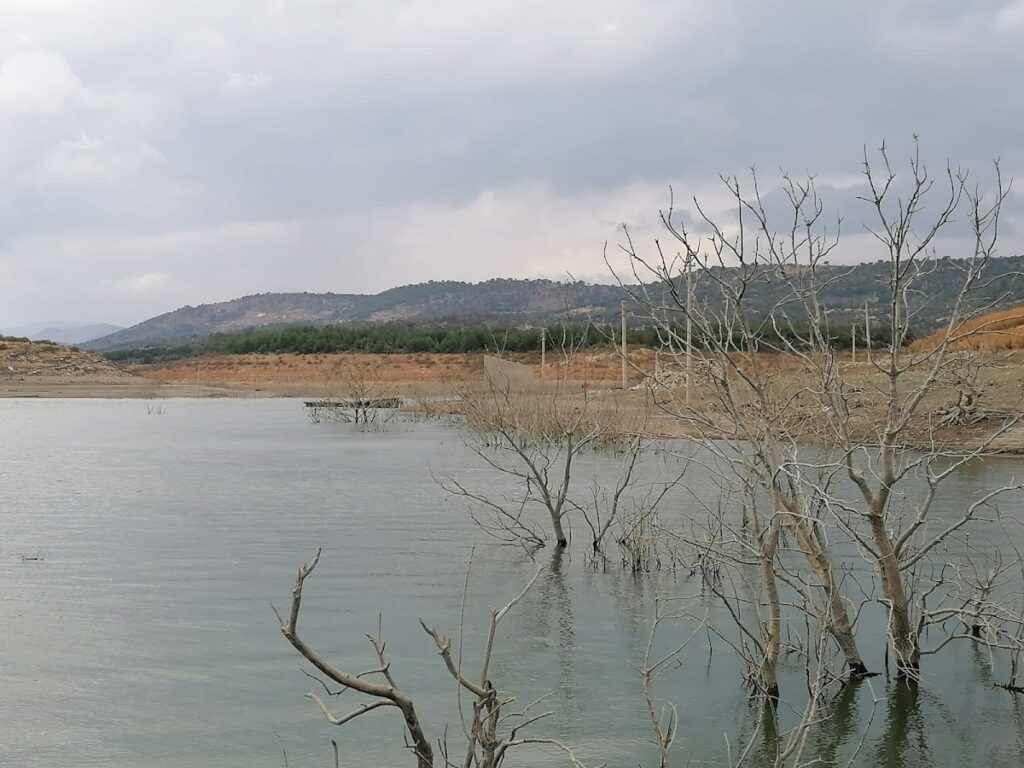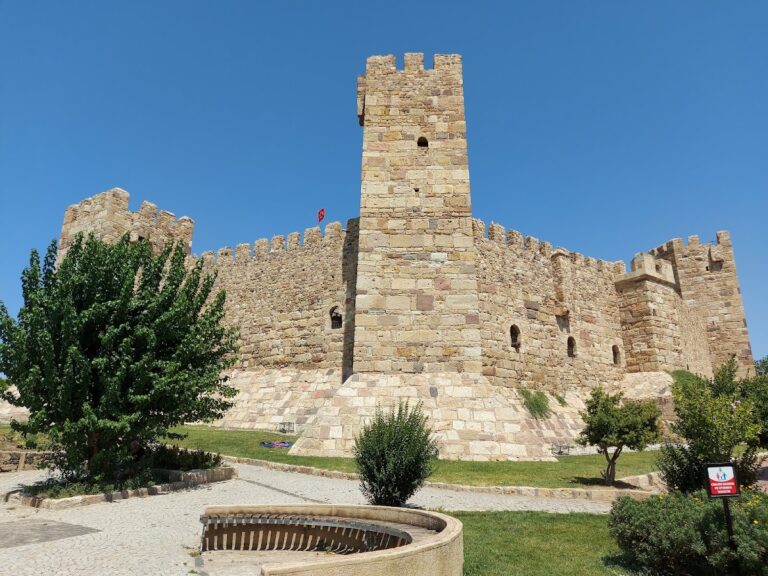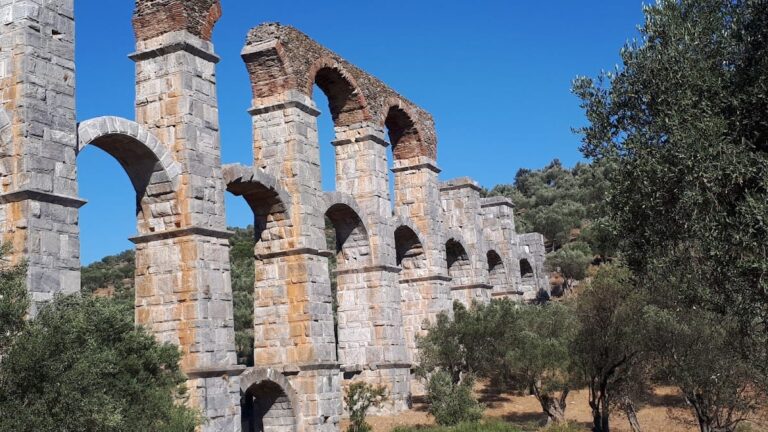Allianoi: An Ancient Healing Spa Settlement in Turkey
Visitor Information
Google Rating: 4
Popularity: Very Low
Google Maps: View on Google Maps
Country: Turkey
Civilization: Byzantine, Roman
Remains: Sanitation
History
Allianoi was located near the modern town of Bergama in İzmir Province, Turkey, about 18 kilometers northeast of ancient Pergamon. It developed as a spa settlement centered on natural thermal springs in the valley of the Ilya River. The site was dedicated to Asklepios, the god of healing, and served as a cult center for health and medical treatment.
Prehistoric activity near Allianoi is evidenced by Early Bronze Age pottery and stone tools found in the vicinity, indicating human presence long before the settlement’s establishment. During the Hellenistic period, a small thermal center likely existed, but no substantial architectural remains from this time have been identified.
The main phase of Allianoi’s growth occurred in the Roman Imperial period, especially in the 2nd century AD under Emperor Hadrian. During this time, extensive public buildings were constructed, including large thermal baths, bridges, streets, and urban blocks. The settlement flourished as a health center, attracting visitors seeking healing from the hot springs.
In the Byzantine era, Allianoi remained used but experienced economic decline. The local population reused Roman building materials and erected simpler structures, including a large basilica-style church and chapels. Workshops for metal, ceramic, and glass production operated within the settlement, reflecting a shift in its economic base.
During Ottoman times, the site was known as Paşa Ilıcası, named after the thermal springs. Use of the area was limited, with only a few coins indicating activity. Early 20th-century efforts partially restored the spa, and the Roman bridge on the west side remained in use until 1979.
Modern archaeological excavations began in 1998 to rescue the site before the Yortanlı Dam reservoir flooded the area. Despite legal protections and international appeals, the dam was filled starting in late 2010, and Allianoi was submerged by early 2011, resulting in the loss of the archaeological remains.
Remains
Allianoi covered an area roughly 300 meters east to west and 200 meters north to south, centered on hot springs with temperatures around 45 to 50 degrees Celsius. The Ilya River ran through the site, historically causing seasonal floods. Two Roman bridges spanned the river at the east and west ends; one remained in use until the late 20th century, while the other survives partially.
The largest structure was the thermal bath complex, occupying about 9,000 to 9,700 square meters. It included multiple interconnected bathing rooms linked by an underground water tunnel supplied by the hot springs on both riverbanks. The baths are among the best-preserved ancient spa complexes, with parts of the superstructure still intact.
The settlement featured marble-paved streets, urban blocks called insulae, public fountains, shops, and elaborately decorated gates. Houses contained well-preserved colored geometric mosaics dating to the Roman period. A notable building identified as a hospital had a courtyard surrounded by colonnades and treatment rooms with individual mosaic floors and access to a central fountain. Ancient medical instruments found there confirmed its function.
Byzantine modifications included a large basilica-style church, chapels, and workshops. Roman architectural elements were reused in simpler buildings. Thousands of artifacts were uncovered, including a nearly complete 1.5-meter marble statue of a nymph interpreted as Aphrodite, ceramics, metal objects, glassware, coins, and medical tools such as 443 bone needles linked to surgical use.
Alluvial deposits helped preserve mosaics and structures by covering parts of the site. Protective walls built in 2003 shielded some ruins from flooding before the dam reservoir filled. The site also contained a monumental gateway (propylon), a monumental fountain (nympheum), and a connection building, all dating to the Roman period and integrated into the urban and thermal complex.
The location in a valley surrounded by hills provided a favorable climate and access to thermal waters, which formed the basis for Allianoi’s role as a healing center dedicated to Asklepios.










